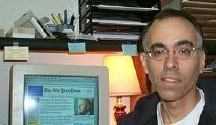
-----
Thickness of bell wall
My friend fabricates metal bells (like church bells) and wants to measure the thickness of the wall of a bell. Physical instruments cannot reach the surface near the tounge-root of the bell and some other means is needed. Could somebody please suggest an economical and practical (for a hobbyist) means of doing this. Thanks - G. Nagaraja
Nagaraja GundappaBangalore, India
1999
How about Eddy current? There seems to be a lot of pages on the internet about it, but I was not able to find the particular application. Or how about magnetic testers if the bell is non-magnetic? What is the approximate thickness of these bells?

Tom Pullizzi
Falls Township, Pennsylvania
1999
Sorry! Site is temporarily read-only as we deal with
intense Chinese hacking crashing e-mail servers.